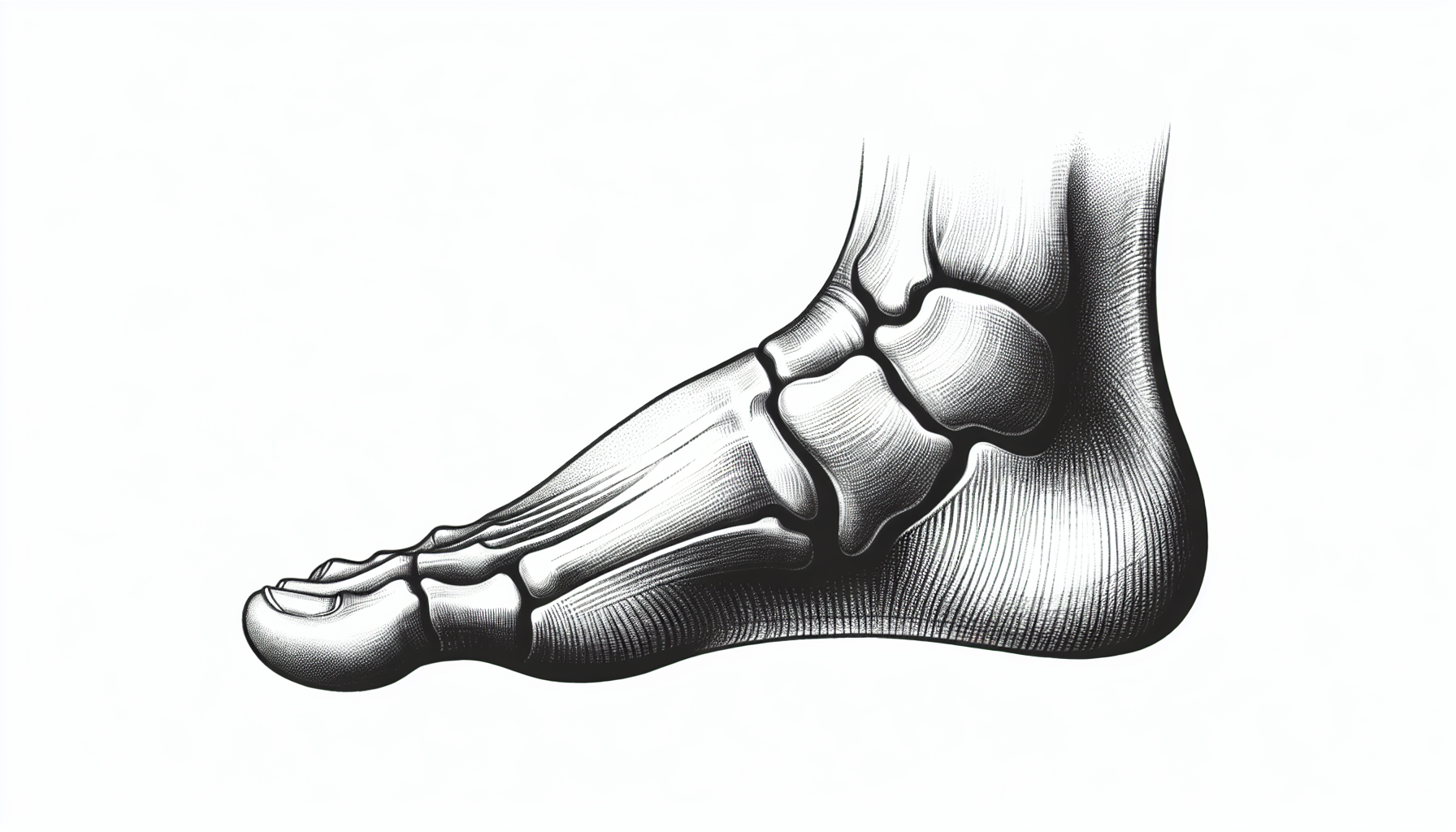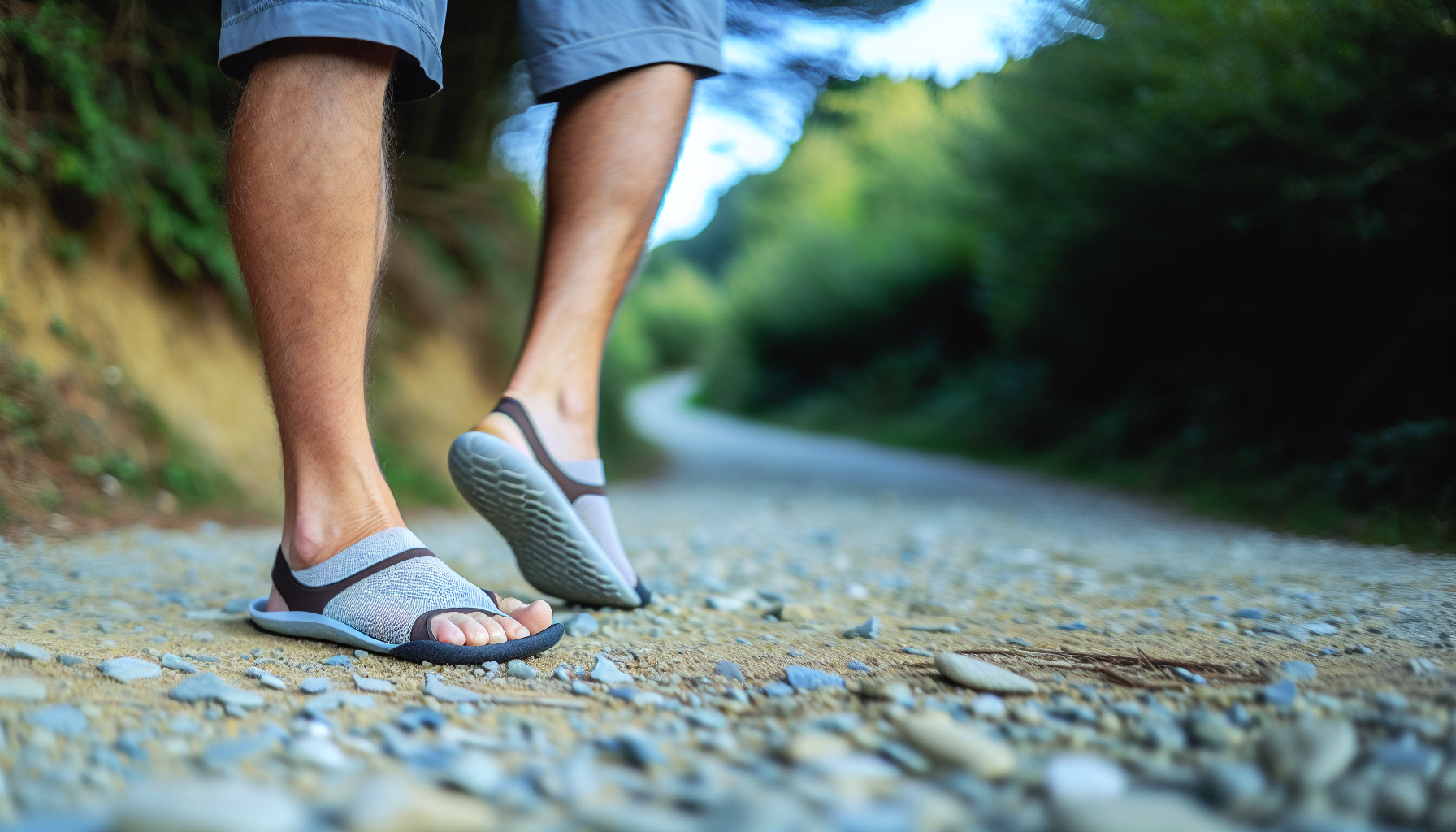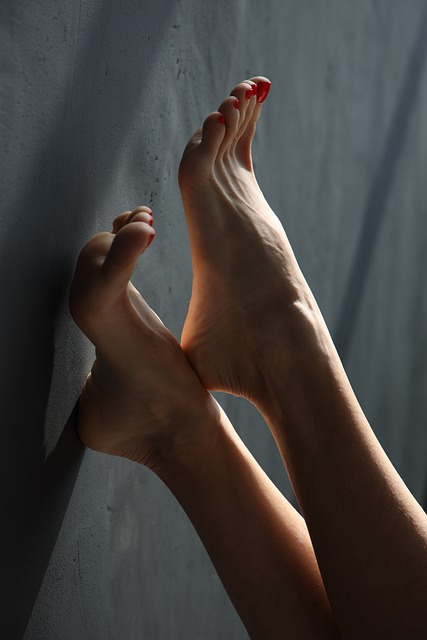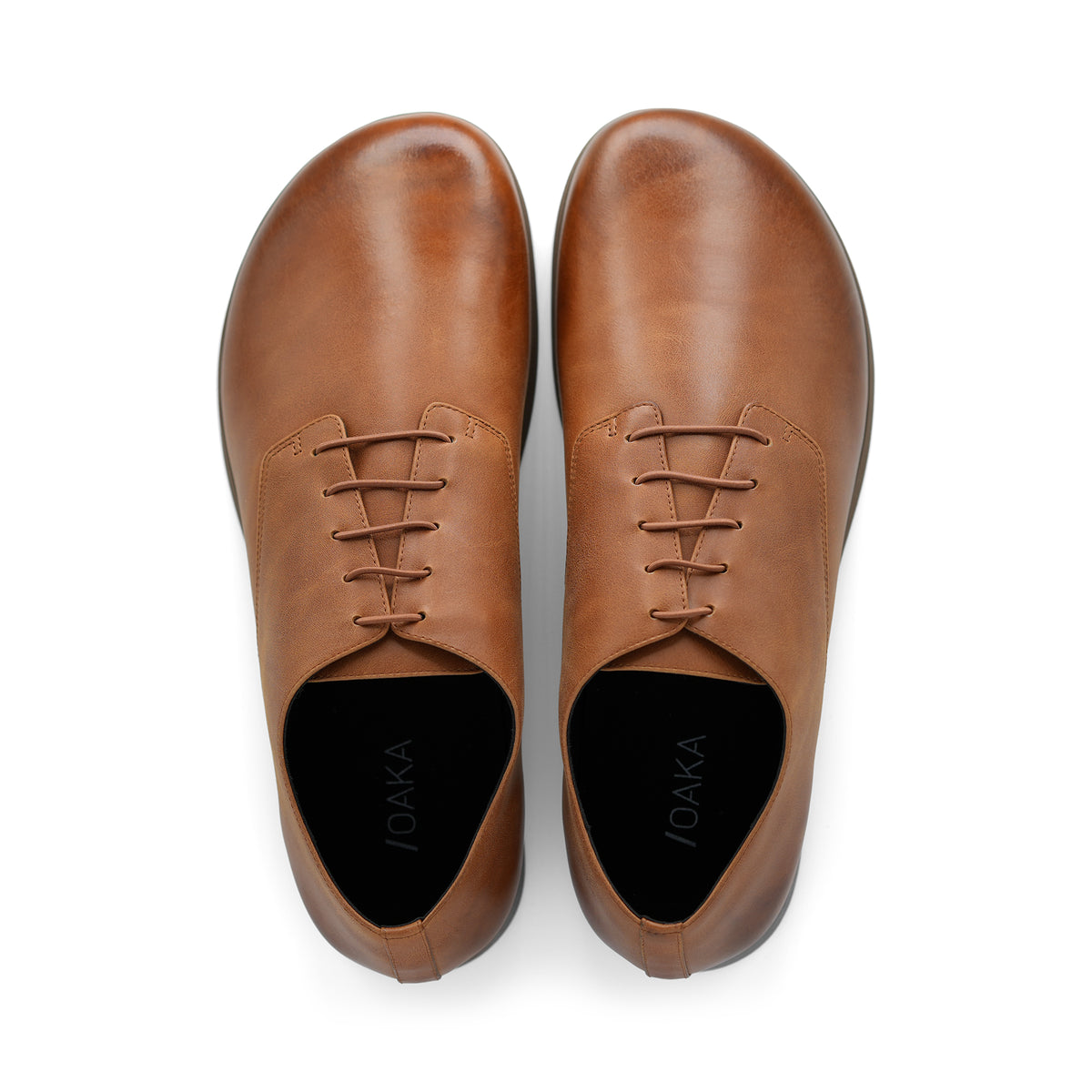Managing flat feet requires the right footwear, and barefoot shoes might just fit the bill. Embracing the minimalist design, these shoes can enhance comfort and foot function for those who grapple with flat arches. Our guide walks you through the critical features of barefoot shoes for flat feet, helping you make an informed choice without the fluff.
Key Takeaways
-
Barefoot shoes with minimal cushioning and zero heel-to-toe drop strengthen foot muscles, promote natural movement, and can alleviate pain for those with flat feet.
-
When choosing barefoot shoes, it’s important to focus on features like lightweight and flexible soles, wide toe boxes, and consider your foot shape and width for a personalized fit.
-
Transitioning to barefoot shoes requires a gradual approach with careful monitoring to avoid discomfort or injury, especially for individuals with flat feet.
Understanding Flat Feet and Barefoot Shoes

Flat feet, also known as flat arches or a depressed arch, is a condition where the soles are almost entirely in contact with the ground. This creates unique footwear requirements for those with a flat foot. Recognizing these needs can assist in selecting footwear that minimizes discomfort.
Enter barefoot shoes. Barefoot shoes, unlike traditional ones, boast thin, flexible soles and a zero heel-to-toe drop. With a spacious toe box, they are engineered to simulate the sensation of walking barefoot. When you wear barefoot shoes, they aim to promote natural foot mechanics and active muscle engagement, contrary to conventional shoes.
Causes of Flat Feet
Contrary to the myth, flat feet aren’t solely due to genetic predispositions. Although genetics can contribute, they don’t tell the whole story. Flat feet can also be a result of injury, age-related wear and tear, or even lifestyle factors like obesity.
Interestingly, some children experience flexible flatfoot, where the arch is visible when not standing but flattens upon standing. This condition often resolves without intervention. And in some cases, a weakened or torn tendon along the inside of the ankle can also lead to the development of flat feet.
Features of Barefoot Shoes
Distinct from ordinary shoes, barefoot shoes feature a unique design that fosters natural foot movement, allowing you to experience the sensation of walking with bare feet. These shoes are characterized by thin, flexible soles, zero heel-to-toe drop, and a spacious toe box that allows for natural toe movement.
Studies have shown that barefoot shoes can actually strengthen arches and reduce pronation for those with flat feet. And the great news is that they are suitable for individuals regardless of their arch height, catering to both low and high arches without issue.
The Benefits of Wearing Barefoot Shoes for Flat Feet

Beyond being a fashion statement, barefoot shoes provide tangible benefits, particularly for those with flat feet. Wearing barefoot shoes can strengthen foot muscles, encourage natural movement, and reduce pain and discomfort.
For individuals with flat feet, the advantages of donning barefoot shoes are significantly pronounced. As the foot muscles become stronger and movement becomes more natural, individuals with flat feet experience reduced pain and discomfort. It’s like a fitness workout for your feet!
Strengthening Foot Muscles

Maintaining foot strength is crucial to avoid pain and movement limitations in people with flat feet. Strengthening the arch muscles through exercises and healthy walking habits is fundamental in addressing flat feet issues.
Barefoot shoes, with their zero-drop soles and wide toe boxes, can encourage natural foot alignment and strengthen the arches over time. Walks or runs in barefoot or minimalist shoes engage the foot muscles in ways that traditional, supportive footwear like running shoes does not, leading to improved foot function.
Encouraging Natural Movement
Barefoot shoes focus not only on muscle strengthening but also on facilitating healthy, natural movement, making barefoot shoes good for overall foot health. These shoes feature thin, flexible soles and a wide toe box to allow safe ground feel and free movement of the toes, which promotes better foot alignment and function.
Zero-drop shoes have no height difference between the toe and heel, supporting natural alignment and gait patterns. A study even found that barefoot running, enabled by the features of minimalist shoes, reduces pronation, which can lead to less pain and discomfort for those with flat feet.
Reducing Pain and Discomfort
Barefoot shoes’ primary benefit lies in their potential to alleviate foot pain and discomfort. By engaging and strengthening the foot’s muscles, barefoot shoes can help manage and alleviate pain associated with flat feet.
The benefits don’t stop at immediate relief either. Regular use of barefoot shoes may contribute to a reduction in pain and discomfort for individuals with flat feet over time. It’s a long-term solution that could potentially revolutionize your walking experience.
Choosing the Right Barefoot Shoes for Your Flat Feet

Selecting the appropriate barefoot shoes for flat feet is not a uniform process. It’s important to understand your specific needs and choose shoes that provide the right balance of comfort and support.
Look for barefoot shoes made from lightweight, natural materials like leather or breathable synthetics for enhanced comfort. Some key features to look for in barefoot shoes include:
-
Lightweight and flexible soles
-
Wide toe boxes to allow for natural toe splay
-
Minimal cushioning to promote natural foot movement
-
Firm arch supports for foot support, especially for people with flat feet
These features debunk the common belief that soft, cushioned insoles are always needed for foot support.
If you are in need of a barefoot dress shoe be sure to check out OAKA. They are zero drop, flexible, and keep a professional silhouette.
Considering Foot Shape and Width
When selecting barefoot shoes, it’s vital to take into account your foot shape and width, including narrow feet. Here are some foot shapes to consider:
-
Slope feet
-
Mountain feet
-
Plateau feet
-
Square feet
Each left foot shape requires careful consideration due to their unique characteristics.
Accurately measuring your foot dimensions using methods like foot tracing and the wall method is essential for determining the correct shoe size. Be aware that the width and volume of your feet can vary throughout the day, with the evening typically being when the feet are largest.
Transitioning to Barefoot Shoes: Tips and Techniques
The transition to barefoot shoes should be undertaken gradually and cautiously. It’s essential to allow your feet to adapt properly, which is particularly important for individuals with flat feet.
Consider consulting a foot specialist prior to transitioning to barefoot shoes for guidance and safety. And remember, there’s no rush. Each person will adapt to the barefoot feel at their own pace, emphasizing the importance of a personalized transition process.
Starting Slowly
If you’re planning to switch to barefoot shoes, initiate by wearing them for brief durations, like 30 minutes per day. This can help your feet adjust to the new feel and mechanics of barefoot walking or running.
Gradually increase the time spent in barefoot shoes each day over a period of 2-3 months. Remember, it’s important to adjust the transitioning process based on your feet’s condition, previous footwear, and barefoot walking history.
Monitoring Progress and Adjusting As Needed
Keeping track of your progress during the barefoot shoes transition is vital. If you’re experiencing pain, reduce the wear time to prevent injury and ensure a comfortable adjustment period.
Examine the wear pattern on the soles of your barefoot shoes to identify and adjust your walking pattern. Balancing toe activation and avoiding excessive pronation can help you get the most out of your barefoot experience.
Common Misconceptions About Barefoot Shoes and Flat Feet
Several misconceptions about barefoot shoes and flat feet might dissuade people from considering this footwear alternative. Let’s dispel some of these myths and shed light on the actual benefits of barefoot shoes.
One common misconception is the need for extensive arch support for flat feet, the impact of overpronation, and the “one size fits all” myth. These misconceptions can lead to confusion and hesitance in embracing the benefits of barefoot shoes.
The Need for Arch Support
A prevalent misunderstanding about flat feet is the requirement for substantial arch support. Conventional podiatry often recommends insoles for flat feet, however, these can lead to arch muscle immobilization and possible weakening.
In fact, evidence from a study demonstrates that arch height does not directly affect pain or functionality of the feet. This challenges the common belief in the need for extensive arch support and opens up the possibility of other, potentially more beneficial, solutions such as barefoot shoes.
Barefoot Shoes and Overpronation
Overpronation is a worry for many people with flat feet, and a mistaken belief is that barefoot shoes can directly rectify it. However, overpronation involves the body’s overall posture and mechanical movements, not just the feet.
If the center of mass in a barefoot shoe does not align properly with the foot’s center of mass, pronation issues could be worsened. Therefore, it’s imperative for individuals with overpronation to consider the alignment and fit of barefoot shoes to prevent exacerbation of their condition.
The "One Size Fits All" Myth
Another widespread misunderstanding about barefoot shoes is the “one size fits all” myth. It’s crucial to understand that not all barefoot shoes are universally beneficial for people with flat feet.
Proper support in barefoot shoes is crucial for individuals with flat feet, as the wrong type of support can lead to discomfort and worsening of foot problems. People with flat feet may require different types of cushioning and arch design in their barefoot shoes, making it advisable to get fitted by a foot specialist for the best results.
Summary
In conclusion, barefoot shoes offer a revolutionary approach to footwear that can particularly benefit individuals with flat feet. By promoting natural foot movement, strengthening foot muscles, and reducing pain and discomfort, barefoot shoes could be a game-changer in your foot health journey. So why not step out of your comfort zone and into a pair of barefoot shoes?
Frequently Asked Questions
Are barefoot shoes good for flat foot?
Yes, barefoot shoes are good for flat feet as they allow your feet to move more naturally and strengthen foot muscles for improved support. This is great for those interested in minimalist shoes or barefoot running.
What type of shoe is best for flat feet?
Stability running shoes are considered the best for flat feet, providing the support needed to address the condition. Be cautious with sandals that claim to offer "arch support."
How do you rebuild arches in flat feet?
You can rebuild arches in flat feet by doing strengthening exercises such as arch lifts, heel raises, towel pickup, toe lifts, and calf stretches. These exercises help maintain the structure and strength of the arch in your foot. Try incorporating them into your daily routine for improvement.
Do barefoot shoes provide enough support for flat feet?
Yes, barefoot shoes can provide enough support for flat feet by strengthening foot muscles and mimicking natural movement.
How do I transition to wearing barefoot shoes?
Start by wearing barefoot shoes for short periods and gradually increase the wear time over 2-3 months to allow your feet to adjust comfortably. Monitor your progress and make adjustments as needed.
_____________
P.S. Try OAKA, our barefoot Derby style dress shoe that strengthens your feet and provides all day comfort.
---
Michael Plater is an authority on barefoot shoes, having spent years reviewing and testing products as well as modifying and ripping out soles to find the healthiest options.

